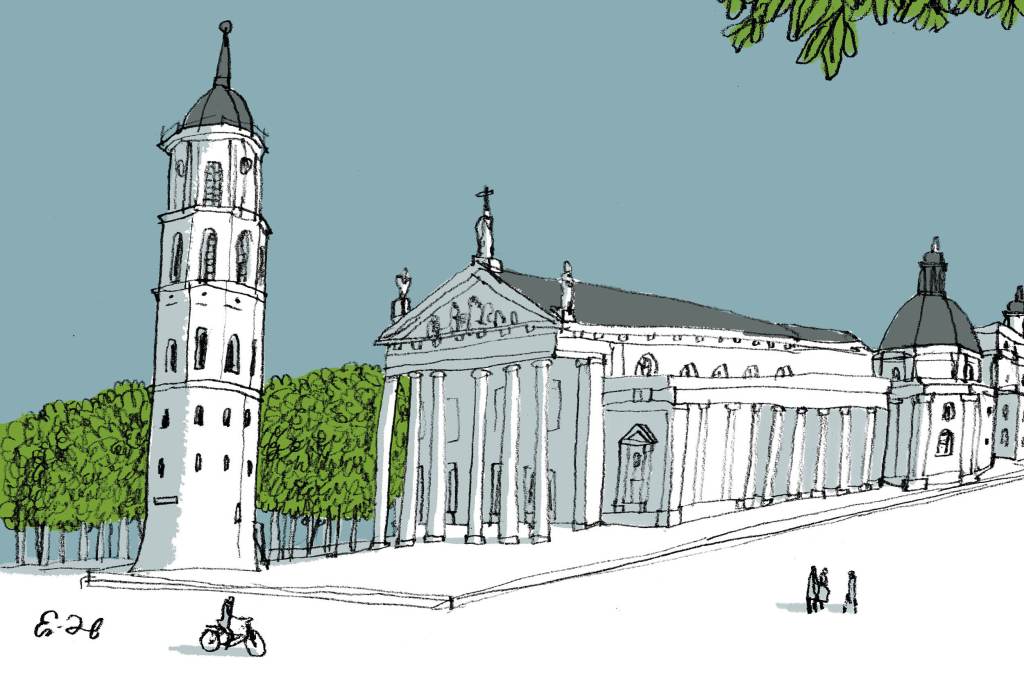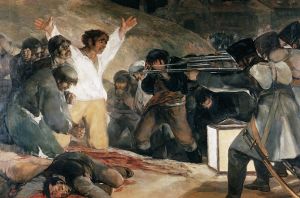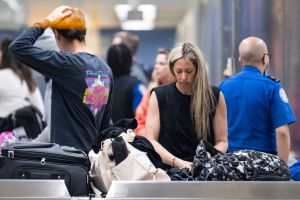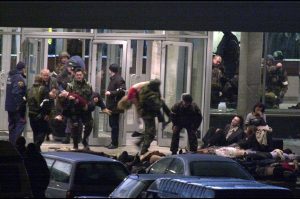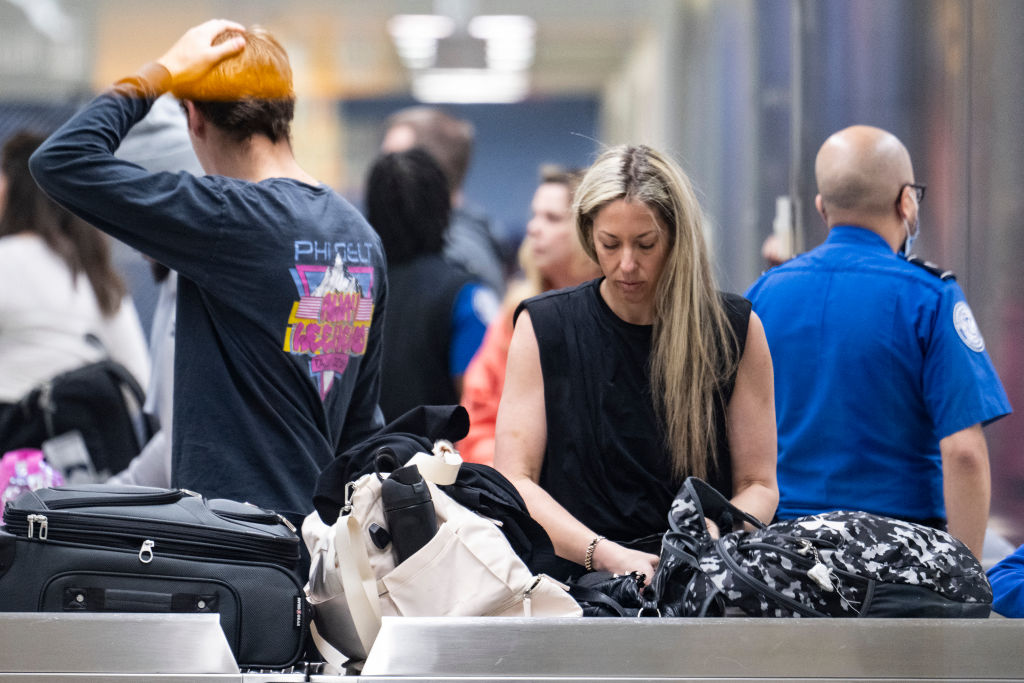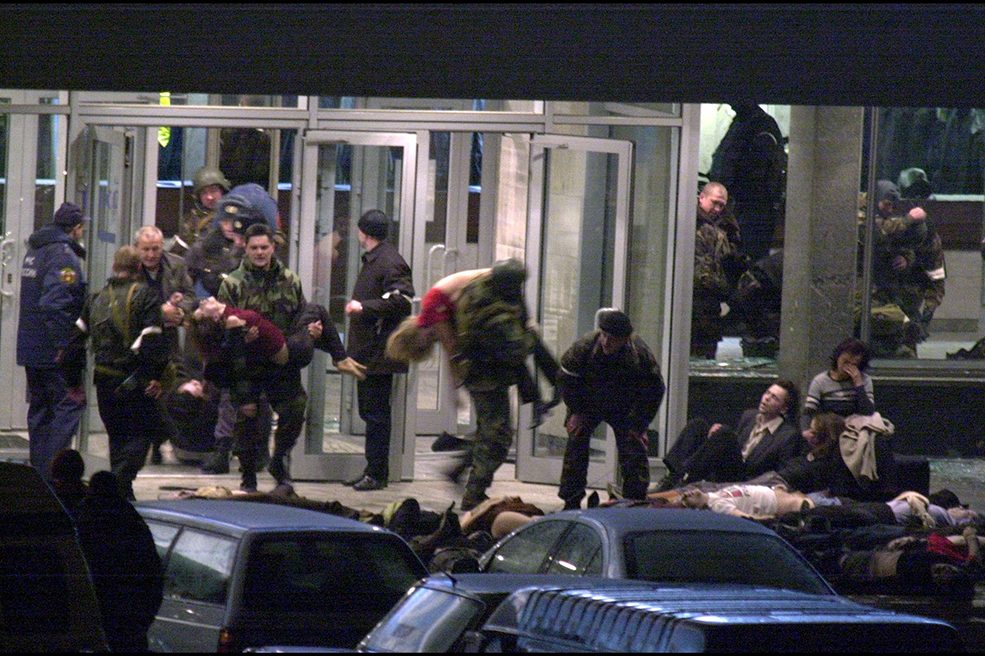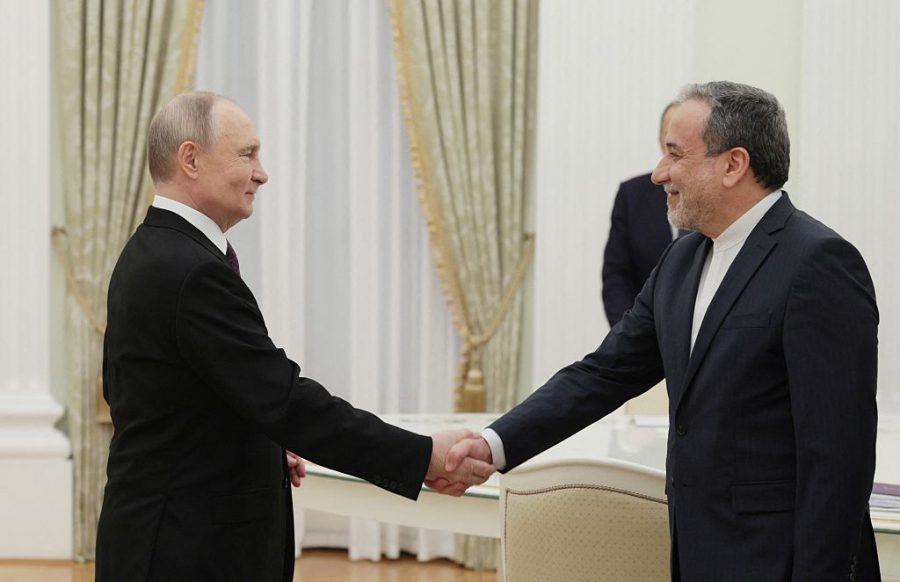On Joe Biden’s first day in Lithuania, he skipped the opening dinner of world leaders at the NATO summit and made a beeline from the airport to his suite at the opulent Kempinski Hotel for a plate of spaghetti bolognese and some quality sack time. My introduction to the country a couple of weeks later involved no fanfare, but was far more memorable. I woke up in the 700-year-old Jaunpils Castle, in a fantastic, out-of-the-way place, lost to my teenage son in an archery competition there and then drove south on winding country roads to northern Lithuania’s Hill of Crosses, a place that better symbolizes the victory of faith over communism than any other.
The Baltic countries — Lithuania, Latvia and Estonia — are often lumped together. All were dominated for centuries by outside powers — Germany, Sweden, Poland and Russia. Each enjoyed a brief period of independence between the world wars, only to be swallowed up by the Soviet Union before regaining independence in 1990-91. (Lithuania was the first of the fifteen Soviet republics to declare independence.) All three countries embraced the West, joining the EU and NATO. But of the three, largely Catholic Lithuania, the last state in Europe to adopt Christianity, is the only one with a devout population today. The Hill of Crosses, located in a pastoral setting just outside Šiauliai, a small city of 100,000 near the Latvian border, illustrates that while the Russians may have been able to rule the Lithuanians, they couldn’t destroy their faith, their culture or their spirits.
It’s believed that locals started placing crosses on the hill to mourn loved ones killed in uprisings against czarist rule in 1831 and 1863. Each time, the authorities removed the crosses, only to see them go right back up. In April 1961, Soviet authorities attempted to bulldoze the hill; they burned thousands of wooden crosses and used the metal and stone ones for scrap. Many who were caught planting crosses were fined or incarcerated. But in the dead of night, others continued to restock the hill with crosses each time the Soviets ransacked it. The site was bulldozed twice more, in 1973 and 1975, but eventually the Soviets realized that their attempts were futile as the crosses multiplied regardless.
I got chills when I saw the place from about a football field away. It isn’t a vast or imposing hill, but it is so comprehensively blanketed in crosses of all kinds that you can barely see a bit of dirt on the ground. There’s a staircase leading up the hill and narrow footpaths leading in other directions. In 2006, researchers estimated that there were 100,000 crosses on the site, but many now believe that figure could be as high as 500,000. It is a stunning, humbling spectacle — one that Biden should have seen but didn’t make time for.
At a nearby restaurant, we told our waitress it was our first meal in Lithuania, and she said, “Welcome to the land of the potato!” Indeed, each Lithuanian eats some 112 pounds of potatoes per year, which seems like a lot, but it still pales in comparison to their Belarusian neighbors, the potato-eating world champs at 401 pounds per person per year. It was here where I began my love affair with Lithuanian cepelinai, insanely filling and delicious potato dumplings that are named for zeppelins because of their shape and heft. Over the course of a weeklong road trip around the country, I ate at least one order of them every day — always filled with meat and drizzled with pork cracklings — and each time felt sure I’d found one better than the last.
Traveling with my wife and two teenage sons for a month, our plan was to spend one week each in Finland, Estonia, Latvia and Lithuania. Our Lithuania agenda included three nights in Vilnius, one in Kaunas, the country’s second largest city, and three nights on the country’s Curonian Spit, a ninety-eight-kilometer sand-dune spit that’s almost equally divided between Lithuania and the Russian exclave Kaliningrad.
I was tired when we arrived in Vilnius after our visit to the Hill of Crosses, but the vitality of the city immediately re-energized me. Vilnius has one of the biggest Old Towns in Europe, and it’s a charmer. In a continent under siege from the ravages of mass tourism, particularly in summer, it stands out as a place where one can appreciate a grand European city full of history and culture in the company of friendly, English-speaking young people away from the tourist hordes and at a reasonable price to boot. (Kudos to Lithuania’s education system, because I have more problems communicating with non-English speakers in my home state of Florida than I did in Lithuania.)
Lina, our excellent tour guide, outlined the city’s history for us, showed us some marvelous Vilnius Baroque architecture, including a magnificent church, St. Casimir, that the Soviets turned into a Museum of Atheism, and told us about Biden’s early spaghetti supper. I asked her about the proliferation of Ukrainian flags all over town. “We’ve been through what they’re going through because the Russians tried to take away our freedom too,” she said. Lina noted that her country of fewer than 3 million people raised 10 million euros for Ukraine in three days in a crowd-funding appeal earlier this year. Despite being one of the world’s most pro-Ukraine countries, tourism is down in part because of the country’s proximity to Russia, a second unfair blow following the pandemic.
I wore my shoes out walking the streets of a city Napoleon called the Jerusalem of the North — Vilnius was 40 percent Jewish until Hitler and the Nazis wiped out its Jewish population. Many cities have one or two streets where people congregate outdoors, but Vilnius has dozens, and I was inclined to experience it all. We played tennis in a 700-year-old park, took an unforgettable hot air balloon ride over the fairytale Trakai Castle and toured an interesting old prison that now has a courtyard bar and food-truck scene worthy of Brooklyn hipsters.
Kaunas was the country’s capital between the world wars, when Poland controlled Vilnius, and it, too, is well worth a visit. The city has a long pedestrian street that’s ideal for people watching, an atmospheric Old Town and enough tasty zeppelins to sink a ship. Nida, a seaside town on the Curonian Spit, seemed like it was going to be a bust as we arrived to wind, rain and an ominous forecast. “It isn’t supposed to stop raining for three days,” a waffle-seller told me the day we arrived.
As the rain poured, my wife and I hit the town’s museums and learned that the place was discovered by German artists in the 1860s when it was still part of East Prussia. Germany later lost the territory after World War One, to newly independent Lithuania. After World War Two, the German-occupied northern half of the peninsula was incorporated into Lithuania, while the southern half became part of Russian Kaliningrad. German visitors who appreciate the town’s charms and its nude beach still flock to the city each summer.
The weather unexpectedly cleared up on our second day in town and we drove to the Russian border, just a kilometer south of town. It’s been closed since the start of the pandemic, and there are only warning signs there now not to cross into the buffer zone, which is a nature reserve. I saw people walking past the “border zone, do not enter” signs to the beach — which is as wide and lovely as any in Europe — and followed them after they assured us we wouldn’t be arrested. To our left, there was a rope line not unlike the kind you’d find outside a nightclub, marking the start of Putin’s Russia and the end of the NATO zone.
Nida’s librarian told us that during Soviet times, when the peninsula was all part of one country, she used to venture south to pick berries. “But now I haven’t been back there in probably twenty years,” she said. “It used to be cheaper to shop there, but now we need a visa and never go.”
The weather improved and we discovered the joys of the Spit — glorious beaches, miles of bike paths, colorful fishermen’s cottages and dozens of forested hiking trails. It’s a UNESCO World Heritage site that’s been well preserved with no tacky high-rise hotels or ugly subdivisions to mar the landscape.
Despite the natural beauty, I wondered about living a kilometer away from Russia on an attractive spit of land the dictator might covet. We stayed in a rented apartment owned by a twenty-five-year-old fisherman, Robert Kazluskas, whose fiancée, a Lithuanian immigrant, lives in Florida. He laughed when I asked him if it made him nervous to live so close to the border. “It does,” he said. “Because we couldn’t stop him. He (Putin) could take this place quite easily if he wanted to.”
But Robert isn’t going anywhere, even though the fishing business has been in a slow decline for years. In fact, he said, he had just convinced his fiancée to move back to Nida from Florida. “This is where I’m from,” he said. “My parents and their parents were born here. We won’t let anyone scare us away.”
This article was originally published in The Spectator’s October 2023 World edition.



